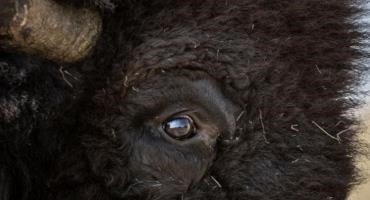By Jeff M. Martin
The U.S. Department of Agriculture Farm Service Agency (USDA FSA) has announced that bison death losses resulting from Mycoplasma bovis are now eligible for the livestock indemnity program (LIP), retroactive for 2021. Producers should coordinate with their local USDA FSA office or USDA Service Center to finalize their: 1) Notice of loss and 2) LIP application for payment. The filing deadline is Feb. 28, 2022. All Mycoplasma-related deaths in 2022 and in future years should be reported within 30 calendar days from the ending date of the eligible loss condition.

Qualifying losses include losses greater than 5% in bison smaller than 400 lbs. (immature) and/or greater than 1.5% in bison larger than 400 lbs. (mature). Moreover, you must provide acceptable proof:
- Of a beginning inventory prior to infection that year and a final tally of deaths by four categories: Bison less than 400 lbs. (broken down by males and females) and bison greater than 400 lbs. (broken down by males and females).
- That your property experienced adverse weather event(s) within a reasonable timeframe before the bison died, including, but not limited to, extreme cold, oscillating temperatures and/or precipitation and/or drought;
- Your local veterinarian’s certification of death loss attributed to Mycoplasma bovis. This may include, but is not limited to, a polymerase chain reaction (PCR) test of at least one animal to confirm that Mycoplasma bovis was present in the individual and that symptoms were present in the remaining individuals. The FSA allows euthanasia of animals suffering from symptoms of Mycoplasma bovis, but the diagnosis must be verified by a veterinarian.
Producers Urged to Inform Local FSA Offices of Mycoplasma-Related Death Losses
Leadership at the U.S. Department of Agriculture Farm Service Agency (USDA FSA) has responded to a request from National Bison Association to find a new path for relief for bison producers affected by Mycoplasma infection and mortality. In previous years, the FSA considered Mycoplasma to be a secondary infection in bison, which prevented producers from qualifying for reimbursement for death losses under the agency’s Livestock Indemnity Program (LIP). The FSA is working now to reconsider that decision. At the FSA’s request, the Center of Excellence for Bison Studies (BisonCOE) at SDSU is providing aggregated data to inform that decision.
FSA Administrator Zac Ducheneaux said this week that the agency is looking at the program requirements for LIP, and for the Emergency Livestock Assistance Program (ELAP), in hopes that coverage can be provided for impacted producers. Ducheneaux urged impacted livestock producers to immediately notify their local FSA office (either by email, or by phone followed up with an email) of death losses incurred because of Mycoplasma. That will provide the agency with important evidence documenting the extent of the losses within the bison industry.
"For now, please encourage producers to notify their local FSA office of any and all losses as soon as possible, and keep them updated as to further losses they may sustain...”
— Zach Ducheneaux, Administrator, USDA FSA
“For now, please encourage any of your producers to notify their local FSA office of any and all losses as soon as possible and keep them updated as to further losses they may sustain and ask for an ELAP application,” Ducheneaux said. Also, if there is overlap of Mycoplasma losses with drought, the USDA requests that that be documented as well to assist with ELAP. Drought conditions for your area over the past year can be determined using the comparison Drought Monitor online tool.
The director of research for the BisonCOE, Dr. Jeff Martin, stated, “We are excited to assist the bison industry in this way. We look forward to contributing in such a large and positive way that identifies some relief for bison managers while research advances to discover more effective vaccines and treatments.”
Carcass Disposal Assistance Available
USDA’s Natural Resources Conservation Service (NRCS) has carcass disposal assistance available under the name “Emergency Animal Morality Management” as part of Environmental Quality Incentives Program (EQIP), and has four practice options:
- Burial
- Carcass disposal other than burial
- Incineration
- Disposal at landfill or render
Eligibility Information for EQIP
Agricultural producers and owners of nonindustrial private forestland and Tribes are eligible to apply for EQIP. Eligible land includes cropland, rangeland, pastureland, nonindustrial private forestland and other farm or ranch lands. To receive assistance, both an application and approved early start waiver must be filed with the local NRCS field office prior to disposal of animal carcasses. Additionally, producers must have farm records established with the Farm Service Agency (FSA), meet all eligibility requirements and have the application filed at the local NRCS. Prior to payment, a mortality certification is required by a veterinarian or an animal health specialist.
Source : sdstate.edu